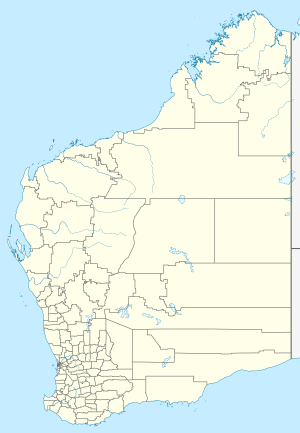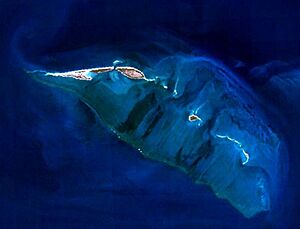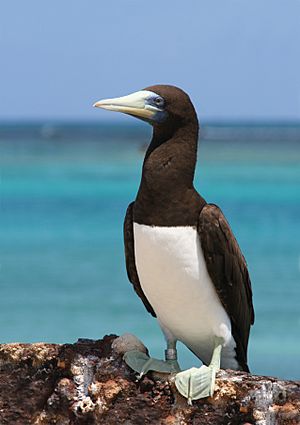Lacepede Islands facts for kids
The Lacepede Islands are a group of four small islands. They are located off the Kimberley coast in Western Australia. This is about 120 kilometers (75 miles) north of Broome.
The islands are about 30 kilometers (19 miles) from the Dampier Peninsula. The Lacepede Channel separates them from the mainland. These islands are very important for seabirds that come here to breed.
Contents
Discover the Lacepede Islands
The Lacepede Islands are a chain of four islands. They stretch for about 12 kilometers (7.5 miles). Their names are West Island, Middle Island, Sandy Island, and East Island.
These islands are small and low. They are made of sand and broken coral. They sit on top of a coral reef. There are no trees on the islands. However, they do have low-growing plants. The average rainfall is about 750 millimeters (30 inches) per year. East Island is home to the East Island Lighthouse.
Protecting the Environment
The Lacepede Islands are a special A-class reserve. The Department of Environment and Conservation manages them. In 1986, all rats were removed from the islands. This helped nesting seabirds return and thrive.
The islands are also the most important breeding place in Western Australia for green turtles. There has even been a possible sighting of an Omura's whale. This is a very rare type of whale.
Amazing Bird Life
BirdLife International has named the Lacepede Islands an Important Bird Area (IBA). This means they are very important for birds. More than 1% of the world's population of brown boobies and roseate terns live here.
The brown booby colony is huge. It might be the biggest in the world. Up to 18,000 pairs of brown boobies breed here. Also, up to 20,000 roseate terns have been counted on the islands.
Many other birds also breed on the islands. These include masked boobies and Australian pelicans. You can also find lesser frigatebirds, eastern reef egrets, and silver gulls. Different types of terns like crested, bridled, and lesser crested terns also breed here. Common noddies and pied and sooty oystercatchers are also present.
Some birds visit the islands during their migrations. These include grey-tailed tattlers, ruddy turnstones, great knots, and greater sand plovers.
A Look at History
Nicolas Baudin named the Lacepede Islands on August 5, 1801. He was on his expedition around Australia. He named them after a French naturalist named Bernard Germain de Lacépède. This naturalist had described many Australian fish species. The islands first appeared on a map in 1811.
Guano Mining on the Islands
In the 1800s, people mined guano on the Lacepede Islands. Guano is bird droppings. It was used as a valuable fertilizer. Companies from Western Australia mined it. But ships from other countries, like the United States, also took guano without permission.
A company from Melbourne had permission to collect guano. They paid a fee for each ton. In 1876, a disagreement happened. An American merchant tried to claim the islands for the United States. He said the islands were unclaimed. He tried to stop the Australian miners.
This event was called the "American Incident." It caused a big diplomatic problem. Eventually, the American ship paid a fee and a fine. The Western Australian government then made new rules. All guano mining needed a license. There were big penalties for breaking these rules.
In 1877, the US President said the claim was not valid. Guano mining slowly stopped in 1879. Most of the guano had been removed.
Images for kids






